 Our World
Our World  Our World
Our World  Weird Stuff
Weird Stuff 10 Fascinating Facts You Might Not Know About Snow
 Miscellaneous
Miscellaneous Top 10 Things Crypto Was Supposed to Change & What Actually Did
 History
History 10 Huge Historical Events That Happened on Christmas Eve
 Music
Music 10 Surprising Origin Stories of Your Favorite Holiday Songs
 History
History 10 Less Than Jolly Events That Occurred on December 25
 Weird Stuff
Weird Stuff 10 Funny Ways That Researchers Overthink Christmas
 Politics
Politics 10 Political Scandals That Sent Crowds Into the Streets
 Weird Stuff
Weird Stuff Ten Bizarre Facts About The Doge Meme
 Our World
Our World 10 Ways Your Christmas Tree Is More Lit Than You Think
 Our World
Our World 10 Archaeological Discoveries of 2025 That Refined History
 Weird Stuff
Weird Stuff 10 Fascinating Facts You Might Not Know About Snow
 Miscellaneous
Miscellaneous Top 10 Things Crypto Was Supposed to Change & What Actually Did
Who's Behind Listverse?

Jamie Frater
Head Editor
Jamie founded Listverse due to an insatiable desire to share fascinating, obscure, and bizarre facts. He has been a guest speaker on numerous national radio and television stations and is a five time published author.
More About Us History
History 10 Huge Historical Events That Happened on Christmas Eve
 Music
Music 10 Surprising Origin Stories of Your Favorite Holiday Songs
 History
History 10 Less Than Jolly Events That Occurred on December 25
 Weird Stuff
Weird Stuff 10 Funny Ways That Researchers Overthink Christmas
 Politics
Politics 10 Political Scandals That Sent Crowds Into the Streets
 Weird Stuff
Weird Stuff Ten Bizarre Facts About The Doge Meme
 Our World
Our World 10 Ways Your Christmas Tree Is More Lit Than You Think
10 Stories About Real ‘Freak Show’ Performers
It’s human nature to stop and stare at anyone who’s different. It’s not a particularly nice part of human nature, but it’s there nonetheless. Carnival sideshows and freak shows have long put the different and deformed on display. While some have argued that at least these shows gave people the chance to make a living, for others, it was a tragic part of an equally tragic life.
10Samuel Parks
Hopp The Frog Boy

Samuel Parks was born in 1874 with a condition called osteogenesis imperfecta. A genetic disorder, the condition is primarily characterized by brittle bones that break very easily. Those who suffer from it can have mild forms with little impact on their quality of life, but more severe forms can mean suffering from hundreds of broken bones, along with scoliosis, brittle teeth, short stature, and even fragile skin and muscle tissues.
For Parks, his version of the condition meant he not only suffered from frequent broken bones, but that his arms and legs were twisted and malformed. The first time he went on public exhibit was at the 1893 Chicago World’s Fair, where he appeared as a medical curiosity. It wasn’t long after that when he discovered that regularly putting himself on exhibition in carnivals and sideshows was a decent way to make a living and support his poor family. He played up his thin, twisted arms and legs, taking on the persona of a frog and often getting on all fours. He was advertised as looking exactly like a bullfrog with a human head.
Parks was married twice, but his personal life was marked with tragedy. His first wife died in childbirth, along with their second child. Their first child was a son, born without the condition. Several years after her death, he married again—to a woman who billed herself as the “Connecticut midget.” The Frog Boy and Princess Wee-Wee toured for a handful of years as “The World’s Strangest Couple,” before retiring to Texas. Parks died in 1923, when he was 49 years old.
9Krao
Darwin’s Missing Link

According to the literature and the signs that accompanied Krao on her tours, she was proof of the missing link between man and monkey—proof that Darwin was right. She was said to be the transitional creature between the two, and she was advertised as having cheeks that she could store her food in, as well as big, pouting lips, the remnants of a tail, and hair covering her entire body. Krao was seven years old when she first went on display at the Westminster Aquarium in 1883. Before she died in 1926 (from complications associated with influenza), she traveled with both Barnum and Bailey and the Ringling Brothers circuses.
By all accounts, Krao was more than just a freak show performer. She was something of an erotic, exotic attraction—the Westminster Aquarium was known as much for prostitutes as it was for oddities. Krao’s furry, half-human, half-monkey body gave her original exhibitioners the chance to use her oddity and exotic unfamiliarity, along with her supposed scientific value, to attract all sorts of visitors.
In 1883, she was exhibited before a congress of professors, academics, and representatives of the medical profession at Trinity College in Dublin. The experts were encouraged to verify that she—a product from a family with a similar appearance, rather than a one-off accidental freak—was a missing link.
However, she was well-spoken and educated by this time. By the time she was a teenager, Krao could read—and was very well-read—and could also speak five languages and play the piano. A learned creature with a so-called simian appearance, she had been carefully groomed to represent both man and monkey.
8George Williams
Turtle Boy

Even though it was far from the truth, the posters and artwork advertising George Williams often showed a turtle shell on his back. Dubbed Turtle Boy, Williams suffered from what’s now thought to be parastremmatic dysplasia, a fairly rare type of bone disease that is primarily characterized by distorted, bowed arms and legs (in which the long bones themselves are bent, as opposed to a joint defect) as well as severe dwarfism.
Only 45 centimeters (18 in) tall and weighing 17 kilograms (39 lb), Williams was billed as having the flippers of a turtle for hands and feet, while having the head of a man. In addition to exhibiting his physical deformities, Williams was also known for his amazing singing voice and his skill playing several musical instruments, including the flute. During his down time, he was also a devoted craps and pool player (as long as his opponent would agree to let him walk on the table). He gained a certain amount of notoriety when he sued New York City after being injured when his wheelchair struck a rut in the sidewalk and overturned. Unfortunately for Williams, he lost the suit.
7Maximo And Bartola
The Aztec Children
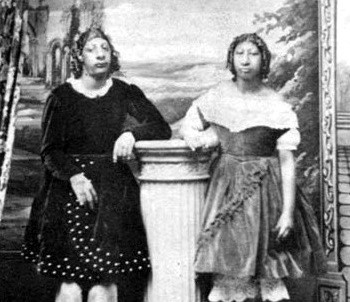
In 1849, Maximo and Bartola began their freak show career in New York City. According to their billing, the pair were members of a nearly extinct, long-lost tribe of Aztecs, and they were displayed in “Aztec” costumes. Their appearance was often compared to historical portraits, drawings, and illustrations of the ancient Aztecs. Complete with their origin story, they were on display throughout Europe and the US for four decades, even as the personal guest of President Millard Fillmore.
The pair were examined by doctors in Boston during their 1850 appearance there, and an article on them was published in the American Journal of the Medical Sciences. According to the article, they were found to be vaguely simian in appearance, with an intelligence that had barely advanced beyond that of a toddler—it also refers to their abilities as, “What might be expected from two intelligent individuals of the canine race.”
The truth behind the pair was much more heartbreaking, although specific details are sketchy. They were born in El Salvador, suffering from microcephaly. This condition is usually identified first by an abnormally small head, which can lead to seizures, dwarfism, and developmental disorders. Those who suffered from it were more commonly known as “pinheads.”
Their parents were approached by a man named Morris who offered to take them to the US and cure them of their condition. Instead of curing them, though, they were put on display in freak shows across Europe and the US, sold and resold a number of times for the next 60 years. In 1867, they were officially married—in spite of being billed as brother and sister in earlier shows. Maximo ultimately died in 1913, and there is no record of what happened to Bartola after his death.
6Sarah Biffin
Portrait Artist
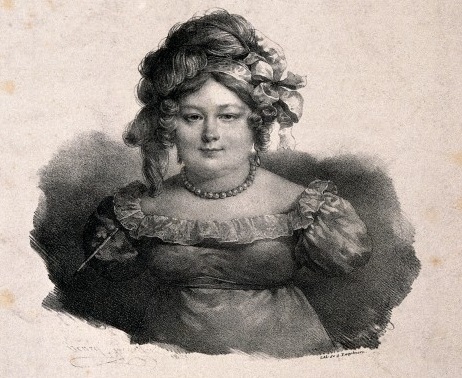
Sarah Biffin was born in 1784, with vestigial legs and no arms. Fiercely independent, she could sew by the time she was eight and write—holding the pen in her mouth—when she was 12. When she was 13 years old, she left her family and joined up with a traveling sideshow owned by Emmanuel Dukes. At first, Dukes exhibited her doing everyday tasks that were meant to be miraculous because of her lack of arms and functioning legs. Until Biffen decided that she wanted to learn how to paint, that was. Paint she did, and she was amazing. Holding the brush in her mouth, and steadying it by tying it to her shoulder, she was soon producing works of art that were nearly masterpieces.
She was eventually commissioned to paint the portrait of the Earl of Morton, and from there her popularity skyrocketed—only partially because of her condition. The Earl paid for her to take lessons from William Craig, the official painter to Queen Charlotte and Princess Charlotte of Wales. By the time Biffen was 29, she retired from the sideshow circuit and settled into a London studio to become a full-time painter. She went on to paint portraits for George IV, William IV, and Queen Victoria. She was awarded medals from the Society of Arts, and now has her work on display at the National Portrait Galleries of Britain.
5Lavinia Warren
Mrs. General Tom Thumb
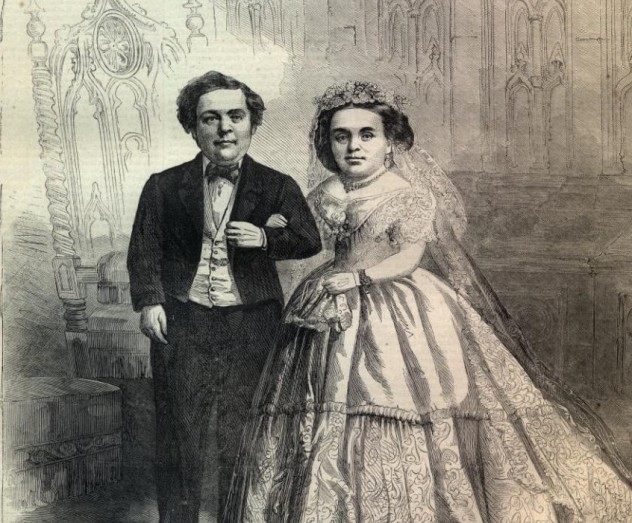
Tom Thumb is perhaps one of the most famous of all sideshow performers, but less famous is his wife, Lavinia Warren, who was only 81 centimeters (32 in) tall and weighed 13 kilograms (30 lb). Warren was born in 1841, and married her famous husband in 1863. A relative latecomer to the sideshow scene, being part of a traveling sideshow wasn’t her first career choice. Previously, she spent a year as a teacher in her Massachusetts hometown.
Only 17 when she joined her cousin’s Mississippi River sideshow, she quickly joined up with P.T. Barnum. Thousands of guests attended her wedding to Tom Thumb, but how much of their relationship was real and how much was arranged by Barnum is up for debate—although the presence of their “baby” certainly was nothing less than another publicity stunt.
The couple was married for 20 years when Tom died after suffering a stroke. Two years later, she was married again. This time, she accepted the proposal of another performer named Count Primo Magri, whom she’d met years before. They continued to be exhibited together, under the billing “Mrs. General Tom Thumb and her husband,” but eventually she took the name Countess Magri. She did, however, continue to sign her name in her personal documents as Mrs. General Tom Thumb.
4Baby Ruth
The Fat Lady’s Daughter

Baby Ruth—and yes, she’s one of the candidates as to where the name of the candy bar came from—was born in 1904 in Kempton, Indiana. One thing she absolutely didn’t want to do with her life was to follow in the footsteps of her mother—a circus fat lady. But she seemed destined for it, weighing 180 kilograms (400 lb) by the time she got out of school. She attempted to make a career out of secretarial work, but found that her weight got in the way of her job performance and even attracted gawkers. Soon, she joined the same circus that her mother had worked for—Ringling Brothers.
By the time she married, she weighed 317 kilograms (700 lb), although she was advertised as weighing more (and was gaining about 18 kilograms (40 lb) every year). One of the stories recorded about her tells of her trip back to her hometown in Indiana well after she had joined the circus. A railroad baggage car was needed to get her there, then a piano truck with a ramp was used to get her to her sister’s home—where she fell through the living room floor. She died in 1942 in the hospital, where she was having tumors removed from her legs. When she vomited under anesthesia, no one could move her, and she choked to death.
3Zalumma Agra
The Circassian Lady
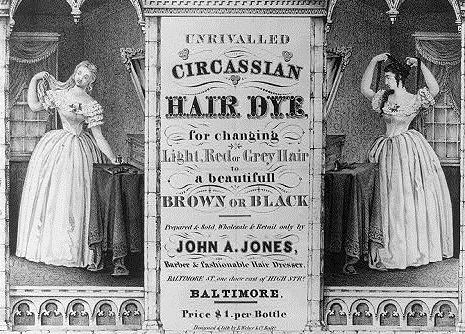
Zalumma Agra was the first in a line of women known as the Circassian Ladies. There’s not much that’s really known about her personally, but it’s thought that she was someone hired to play a role, rather than someone with an actual deformity or disorder, as many of the other so-called sideshow freaks of the time were. One thing that is known is that it was the legendary P.T. Barnum who created her. In the late 1800s, the perfect woman, the pure racial ideal, the most delicate specimen of beauty, was the Circassian woman. Part of the myth had begun a century before, with tales of beautiful white women being sold into slavery and populating Turkish harems; the other part was a creation of Barnum.
In 1864, he ordered one of his associates to procure a Circassian woman for him to exhibit in his shows. His associate failed, so Barnum created one, and he called her Zalumma Agra, or Star of the East. He dressed her in jewels and embroidered gowns, gave her a cross to wear, and instructed her to wash her hair in beer and comb it into a cloud around her head. The look became the template that countless other Circassian Ladies would aspire to, even though there was nothing about it that had anything to do with actual, real women from the Circassian region of the Caucasus. What he was going for, though, was the personification of the white, pure ideal, and it was so popular that sideshows across the country were soon exhibiting their own “Circassian Ladies.”
2The Tocci Brothers
The World’s Oldest Conjoined Twins
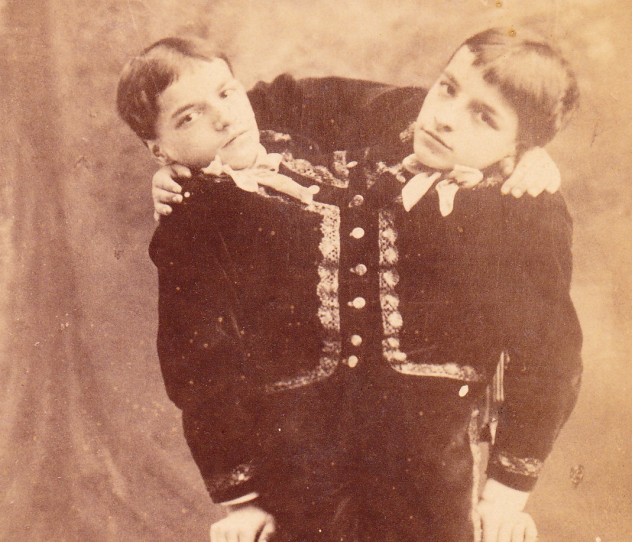
Born in 1877 in Italy, Giacomo and Giovanni Tocci are in the Guinness Book of World Records for being the oldest conjoined twins, living to be 63 years old. The twins were joined at the sixth rib. They had one pair of legs (each one controlled one leg), but separate stomachs, lungs, hearts, respiratory, and circulatory systems. One could get sick without the other feeling ill. Those who met them often remarked on how different the two were—Giovanni liked beer while Giacomo preferred water. Giovanni could draw, while Giacomo was the more talkative of the two.
While their parents were by all accounts shocked and horrified at the appearance of their sons, they soon realized that their deformities were extremely marketable. They went on tour in Europe first, ultimately going to the US. The boys were billed “The Two-Headed Boy,” or “The Wonderful Blended Twins,” and while their condition made for some difficulties in life—they were unable to stand on their own—both were intelligent, spoke several languages, and had an interest in music, although Giovanni is often said to have been more intelligent than his brother.
Perhaps unsurprisingly, they got along decently well, but disagreements were known to end in a fistfight. Scientific American documented the boys, calling them amazing, healthy examples of twins. They were so popular in the sideshow business that by 1891, they were making $1,000 a week—that’s about $25,000 in today’s money.
1George Alexander Gratton
The Spotted Negro Boy

George Alexander Gratton was born on the Caribbean island of St. Vincent in 1808. His parents were slaves from Africa, living and working on a plantation belonging to a man named Mr. Alexander, who was no doubt taken quite aback by the baby’s appearance. The boy was born with piebaldism, a genetic condition that results in patches of white skin, usually more noticeable on the face, head, and upper body. Realizing the great earning potential that the baby had, he was placed in the care of the plantation’s overseer, a man named Gratton, who would eventually give the boy his last name.
Still a baby when he was put on display for the first time, George Alexander was first on exhibit in cities on St. Vincent, where the princely sum of $1 was charged to view him. By the time he was 15 months old, he was taken to England, where he was sold into the traveling sideshow of a Mr. Richardson who, by all accounts, treated the boy as if he were his own child. Richardson paid 1,000 guineas for him—in today’s money, that’s a staggering $132,000. George Alexander was a popular attraction with the sideshow, in part because of his spotted skin, but also in part because he was described by those who saw him as a truly bright, beautiful, and intelligent child—he was billed as the “Beautiful Spotted Negro Boy.”
He was baptized on July 22, 1810 and made the circuit of fairs, carnivals, and sideshows throughout England. The young boy was so popular that he was often contracted by wealthy citizens who wanted to arrange more private viewings with him, and his popularity meant that he was often on stage for up to 12 hours a day. The grueling schedule was thought to have something to do with his untimely, tragic death—not yet five years old, George Alexander developed severe swelling in his jaw and died on February 3, 1813. Mr. Richardson buried him in a vault in Great Marlow, Buckinghamshire.








